Hi Sonia… what is your background and connection to the Living Oceans Foundation?
Hello! I am a Marine Biologist and I work under the supervision of professor Peter Mumby in the Marine Spatial Ecology Lab at the School of Biosciences at the University of Queensland in Brisbane, Australia. My appointment with the Living Oceans Foundation is as a Post-Doctoral Research Fellow.
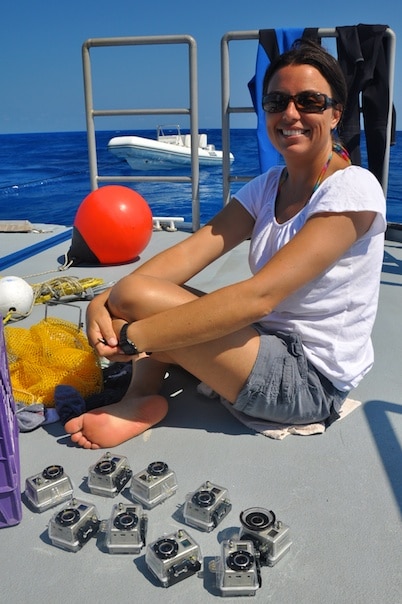
Tell me about the research you’re conducting on the expedition as part of your Fellowship…
During the Global Reef Expedition, we’ll be visiting many different areas all over the world and I’ll be quantifying the amount of fish grazing that is occurring in each location. The reason why I am doing this is because fish grazing is a process that plays a very crucial role in the resilience of the reef ecosystem. The reef is constantly being hit by natural and human disturbances and there is always a chance that the reef is going to lose complexity and lose its main constructing organisms, which are the corals. In this particular situation, the algae have a bit of an advantage, so if a reef doesn’t have enough fish grazing activity, there is a risk that after a disturbance the reef would very quickly become an algae-dominated space rather than coral-dominated space. The reef may stand a better chance of remaining healthy if there is enough grazing pressure on it. So, if I can measure how much grazing pressure there is at each site, we will know how well each particular reef ecosystem can cope with a potential disturbance event and recover from it.
How do you measure the amount of fish grazing on a reef?
What we are measuring is the number of bites by each species of fish in a certain time over a certain area of reef. So, we are trying to quantify the grazing pressure as how often each square meter of reef gets grazed by the herbivorous fish community. We’ve tried in the past to do this measurement by following individual fish and counting its bites. That method is limited by the time an observer can spend underwater and we just felt we were not getting the full picture this way.
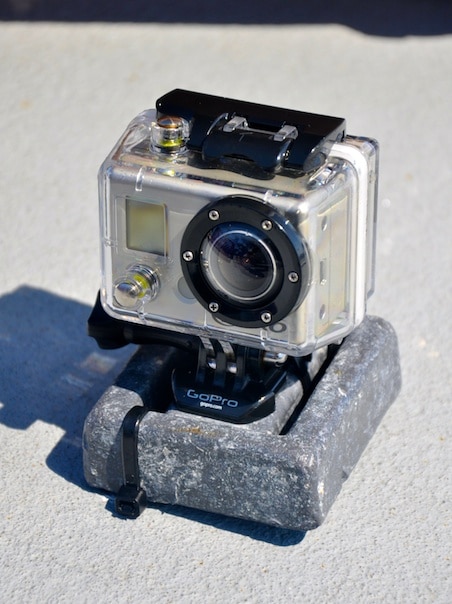
Instead, I am now putting many eyes on the reef at once – by using underwater video cameras. We have these small hi-definition video cameras that allow us to film about up to 5 hours of footage at a time. So, we go to a particular site on the reef and we set 10 cameras in different places along the reef. The cameras are approximately 4-5 meters apart from each other and we face them to look at different scenes with mainly graze-able substrate in frame. Once they are set, we turn them on and leave them recording with the divers out of the water, so that the behavior of the fish is unaltered by the presence of the divers. Once we have filmed for 2-3 hours, we return to pick up the cameras. We also try to time our dives when the grazing pressure at its maximum. We know from other studies that this happens in the early afternoon. There’s normally low fish feeding in the morning and then after about 11am, it picks up and reaches a maximum at about 1 or 2 pm.
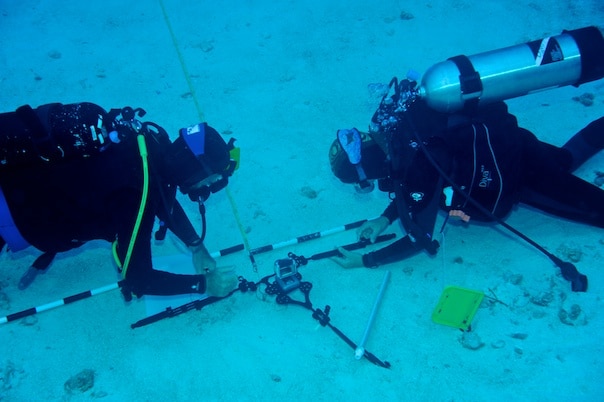
The cameras are advantageous to previous methods in many ways. We get a lot of data over the course of one dive – more data than a single observer could do by watching individual fish – so we’re maximizing the amount of data that we get per dive. And then we also know that the fish behavior is completely unaffected because no one is following the fish and disturbing it. The fish are just feeding in a normal way.
After you collect all of the footage, what do you do with it?
After the expedition is over and I am back at the lab, I plan to project the footage on a big screen and watch them to make my observations. I will probably play them at speeds faster than real time because there will be a lot of time where nothing happens. I expect the videos to have maybe 5 minutes of nothing and then 3 fish show up at the same time and then go away… so I am going to try and find a way to play them a little bit faster so that I don’t spend the rest of my life doing this. [Sonia laughs] I will probably need volunteers to help watch because there a lot of hours of video. I’ve already completed surveys at seven sites with ten cameras per site and each camera shots 2.5 hours of footage. That’s about 25 hours of video per site, and 175 hours total for this expedition alone!
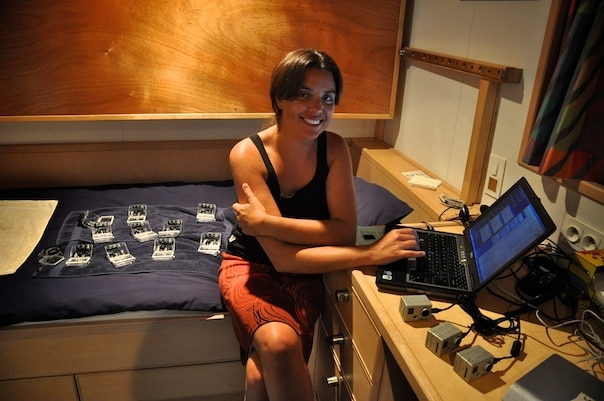
As I watch through all of this footage, I’ll identify the species and the life phase of each fish; and I have a method for estimating the size of each fish. And then I’ll count the bites that each one takes on the bottom. And I will do that for every single feeding event that shows up in the video. Ultimately, what we want to know more about is the contribution of each different species to the process of grazing on the reefs, so that we can improve the management considerations for each species. So, if we know that one species is very important and it contributes a lot to the grazing pressure, then we can take care to not fish that species as much, or to protect their habitat, so that the reefs remain resilient.
Will you do this for every stop on the Global Reef Expedition?
We are hoping to do this everywhere we go, especially in contrasting environments. We want to conduct surveys at sites that are very exposed to wave action, and sites that are less exposed, and also at very complex sites and flatter sites… and see how the fish grazing pressure varies in different reef environments.
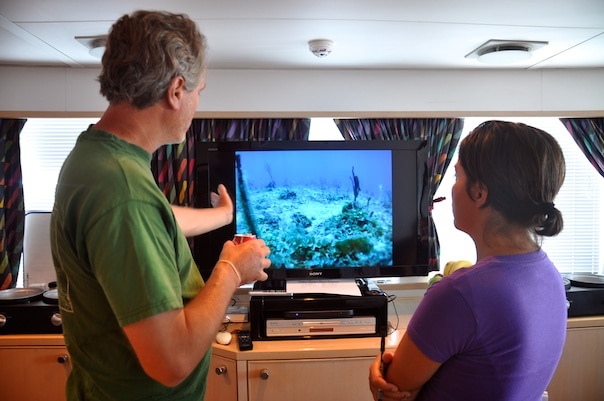
One final question… What is it that made you choose this area of research?
I love fish. I really, really love fish. [Sonia smiles] I just enjoy studying their behavior because they are very interesting creatures. They’re really clever. On the other hand, while that makes it fun, the real reason why I do this research is because I care about the factors that will determine whether or not a reef will live or will die. So, I study this grazing behavior because it is one of those factors. And a big part of it is that I need to know that what I do is helping someone in some way – that I am helping to understand the reefs to protect them better and the fishermen that will be able to enjoy a reef with a longer life. It is rewarding to know that what I do is useful and important.
To follow along and see more photos, please visit us on Facebook! You can also follow the expedition on our Global Reef Expedition page, where there is more information about our research and our team members.
Post by Liz Smith
(Images/Photos: 1, 2, 4, 5: Liz Smith; 3: Phil Renaud)